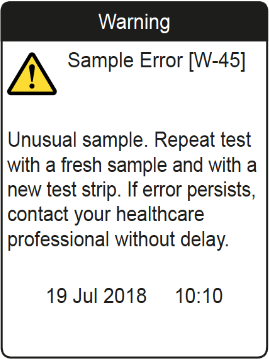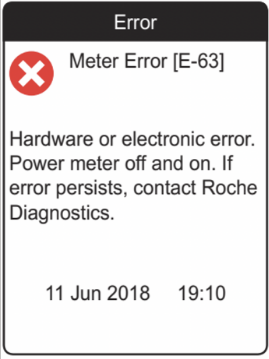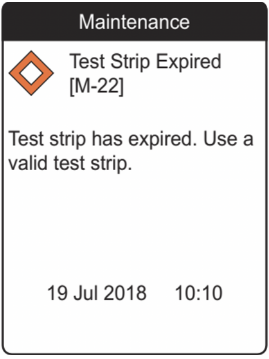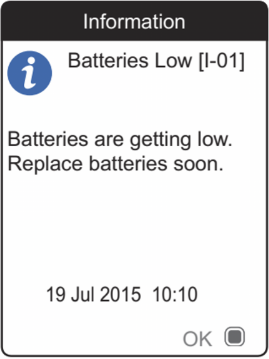Access coupon
Frequently asked questions
Find answers to your questions about anticoagulation, self-testing, and CoaguChek®.

Anticoagulation
Blood coagulation is vital, because without it you would not stop bleeding after an injury. The thickening and clotting of blood is a complex process involving numerous substances produced by the body (e.g., clotting factors and platelets).
Coagulation involves three important steps:
- The vascular walls at the place of the injury contract.
- The blood platelets stick together and form a blood clot that seals the place of the injury.
- Coagulation factors are formed in the liver that ensure that the blood clot solidifies and does not dissolve.
In healthy people, coagulation works reliably and potentially dangerous clots are not formed. In other words: the system is in balance.
There are a number of types of anticoagulant medications, also known as blood thinners. The medical term for these is oral anticoagulants. When they are ingested, the natural clotting of the blood is reduced and it takes longer for it to clot.
The following are the main types of anticoagulants:
- Vitamin K antagonists, also known as Coumadin (or warfarin)
- Heparin
- Thrombocyte aggregation inhibitors
- DOACs (also known as thrombin and factor Xa inhibitors)
For long-term or ongoing anticoagulant therapy, vitamin K antagonists or DOACs can be used. Both are taken as tablets. Vitamin K antagonists are the most common because they have been used for over 60 years, and doctors are familiar with their effects and safety profile.
A major advantage of using vitamin K antagonists is patient self-testing of coagulation (INR levels). Self-testing of coagulation levels is not possible with DOACs. For some patients, regular self-testing of their INR levels may be of great benefit.
When taking vitamin K antagonists, the coagulation level needs to be monitored regularly in order to check whether the optimal dose is being used. If the dose is too low, a clot may form. If it is too high, there is a risk of bleeding. It is important to balance these two risks. To do this, your doctor determines the therapeutic range in which your coagulation level should be.
Based on what you’re being prescribed anticoagulants for, your doctor will determine an individualized therapeutic INR range. This is the target range: your INR should not be higher or lower, as this may increase the risk of bleeding or a clot.
Recommended ranges:
- Atrial fibrillation: INR of 2.0–3.0.
- Heart valve replacement: INR of 2.0–3.5. This depends on the type of heart valve used and whether the heart rhythm is regular.
- Thrombosis or lung embolism: INR of 2.0–3.0.
These are recommended ranges only. Your doctor will determine what your target INR range is.
INR stands for international normalized ratio. It is the most common method of measuring to what extent the blood clotting is slowed. For instance, in a patient with an INR of 2.0, it takes twice as long for the blood to clot compared with a person who is not taking an anticoagulant (and has an INR of 1.0).
The Quick value is also a commonly used unit but has become less popular than INR because it can fluctuate greatly. The Quick value is stated as a percentage (normal range: 70–130%) and is opposite to the INR in that a high percentage is equivalent to a low INR, and vice versa.
INR monitoring is done in your doctor’s office at regular intervals, as your doctor sees best. With self-testing, weekly monitoring is recommended. Studies have shown that patient self-testing is associated with significantly more values within the therapeutic range than is testing carried out in the doctor’s office.
If you are receiving ongoing anticoagulant therapy with vitamin K antagonists, there are a few things you should watch out for. For instance, do your best to avoid injuries and cuts because this could lead to increased bleeding. There are also some nutritional and travel considerations to keep in mind—but not to the point where it should interfere with your enjoyment of daily life.
Self-testing
Visit our Resources section to access how-to videos and other informational brochures. You can also refer to step-by-step photos and instructions in our Self-testing section.
If you have any questions, please contact our CoaguChek® Roche Care Centre Monday to Friday from 8 a.m. to 5 p.m. (EST) toll-free at 1-877-426-2482. We will be happy to walk you through all the various steps of self-testing.
You can also contact us online.
The values obtained from using the CoaguChek® INRange or CoaguChek® XS system are reliable. The system is designed to automatically measure the functioning of each test strip after it has been inserted in order to avoid faulty test results. If, for instance, a test strip has been positioned incorrectly, the device will show an error message. See below for a list of all possible error messages and what to do.
If you get an error message, you may also contact our CoaguChek® Roche Care Centre toll-free at 1-877-426-2482, Monday to Friday between 8 a.m. and 5 p.m. (EST).
Please call the CoaguChek® Roche Care Centre right away, toll-free at 1-877-426-2482, for any error messages to prevent wasting your strips.
The CoaguChek® instrument has a 2-year warranty, please make sure to fill out the form upon purchase of the instrument. The meter is not repairable, but for any issues, please call the CoaguChek® Info-Line (1-877-426-2482) to confirm whether the meter will need to be replaced. Some of these issues can be solved with the help of the CoaguChek® Roche Care Centre.
To validate your 2-year warranty, you can fill in the formulary here.
When performing a control test with the CoaguChek® XS PT control solution, leave the code chip of the test strip in the meter. The code chip from the control solution box must NOT be used. The code chip that comes with the control solution is meant to be used with another professional meter.
Many pharmacies and clinics offer point-of-care INR testing and can also follow patients who self-test INR with CoaguChek®.
Great news! In Quebec, since February 2017, the general drug insurance plan reimburses CoaguChek® strips for every patient.
In addition to refunding the strips, some private insurance plans also reimburse the meter. Contact your insurance company for more information. Get detailed information on coverage and reimbursement here.
You can purchase a CoaguChek® XS meter from your local pharmacy. Please contact your local pharmacy ahead of time, so that they can order the meter and strips from their wholesaler/distributor.
Our measuring devices are maintenance-free. When the CoaguChek® INRange or CoaguChek® XS is switched on, the system runs through several internal function checks. You do not need to carry out or arrange for any other maintenance.
To avoid malfunction of the meter, follow the procedures indicated in the Operator Manual to clean and disinfect the meter and the lancing device.
There is no calibration task that needs to be performed by the user. The system (instrument and test strips) autocalibrates with the test strip corresponding code chip lot number inserted in the instrument.
If your system needs to be verified for its performance, please ask your pharmacist if they can perform the CoaguChek® XS PT Control test for you, or call the CoaguChek® Info-Line/Coagulation Info-Line (1-877-426-2482) for assistance.
Common CoaguChek® INRange error messages
There are four icons that may appear with an error message:




In all cases, the text next to the icon will explain the problem and provide instructions about what do to next. Once you have read the message, press the "Enter" button to confirm the message and then proceed with the current task.
Common CoaguChek® XS error messages
or
Test strip unusuable or not a CoaguChek® XS PT test strip
or
Remove the test strip and repeat the test with a new or correct test strip
First check whether the date setting is correct in the meter. If it is not, set the correct date.
If the date is correct: turn the meter off, remove the code chip and test strip. Use a test strip from a new lot of test strips and insert the code chip that came with the new lot
Turn the meter off, remove the test strip and re-insert it. If the error message appears again, discard the unusable test strip and use a new one.
If you still get the error message after you have inserted a new test strip, turn the meter off again. Wait two minutes before turning the meter on. If the error message still appears, the meter might be defective. Contact the CoaguChek® Roche Care Centre, toll-free at 1-877-426-2482.
Turn the meter off and remove the test strip. Repeat the measurement using a new test strip and blood taken from a new puncture site at the tip of another finger. Do not touch or remove the test strip when a test is in progress.
This error message (7) can occur in rare cases, i.e. in patients with long coagulation times (> 8 INR, < 5% Quick). If this error message appears again when you repeat the test, your results must be checked using another method. Please contact the doctor treating you immediately.
Turn the meter off and remove the batteries. Wait at least one minute before re-inserting the batteries in the battery compartment, and then set the date and time.
Repeat the test. If the error message persists, the meter has a fault. Please contact the CoaguChek® Roche Care Centre, toll-free at 1-877-426-2482.
Turn the meter off and wait for at least 2 minutes. Ensure that when you perform a test the ambient temperature is stable.
Repeat the test. If the error message persists or re-appears in the future, the meter has a fault. This error indicates possible damage to the heater plate contacts. Contact the CoaguChek® Roche Care Centre, toll-free at 1-877-426-2482.